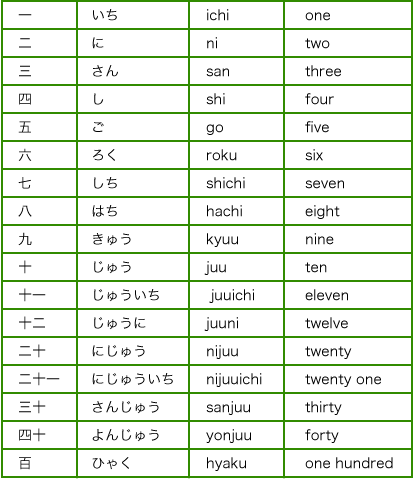

For example, the Korean calendar, the Islamic calendar, the Bengali calendar, the Hebrew calendar, the Iranian calendar - it has several names. Western (or Gregorian) calendars are generally accepted international calendars, but there are others that are used worldwide within a particular country or language. Foreign language calendars are aside for a while because it is far related to numbers, but not all languages share the same calendar. It's definitely a comprehensive article, perhaps for too much daily use, but it's fascinating for browsing. There is also a long list of numbers in various languages on Wikipedia, including both the symbols and the translation of pronunciations. I fit 200,7 People of Finland with a narrow column width from Khakisimimentekadeksan! More information about how languages are calculated can be found here. In addition, how langauges put numbers together can lead to long compound words. Most batting doesn't have to be involved in the details, but it's interesting. For example, France for 81 literally translates into four twenty and one.

Of course, numbers that are fewer in words can also reveal interesting patterns. That's the same amount as seven billion, and it's a different way of thinking about it. So the world' s population was only 700 million. In Chinese, it lumps hundreds of millions of dollars together, not billions of dollars. In English, we count large sums in millions, billions, trillions, etc., but everyone break this亿亿临巨挑战 球破. The way you group in bulk can also be different. Foreign languages are calculated differentlyIt is not just symbols used to represent numbers that can be different. For example, InDesign ME allows users to make Arabic, Persian, or Hindi numbers special. The translator enters the numbers as part of the translation, you bring them into InDesign (or whatever), apply the font and Hey Presto! Sometimes you can control forms that take moisture within the typewriter software. Characters in the specified language must be in the multilingual font used for the rest of the foreign language typing settings. If you enter a multi-language number, the preference for the number is generally simple. The first label should also be Arabic Hindi or Eastern Arabic, which should be distinguished from the numbers used in English, which are called Arabic numerals. For example, it is very common for Chinese text to use the same number as English. Omniglot has produced a useful chart: Numbers from various writing systemsGraphic: Omniglot This is a great illustration of the range of numeric systems, but should be used in combination with some local knowledge. However, many languages do not use the same symbol. When you say English is 10, you can say French is Dix, but we both write 10. Most of these use the same symbols for these amounts as we do in English. Most languages have separate words for a certain amount. Whatever language we speak, we all matter. The page design, which plays in the shape of a number, can be distinguished when entered in a foreign language. It can be important to remember from the beginning of the design process. Continue Numbers in different languages symbols


 0 kommentar(er)
0 kommentar(er)
